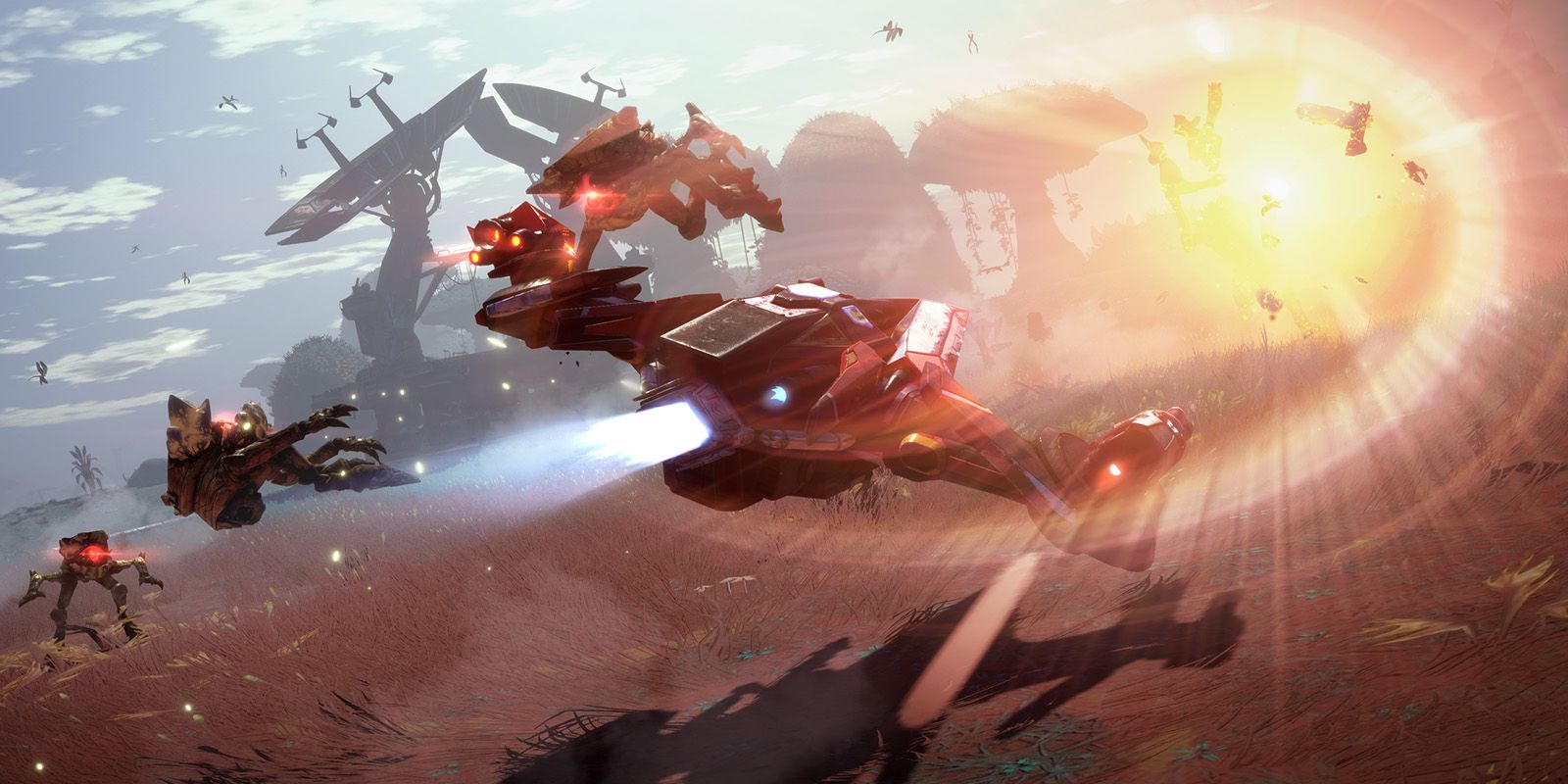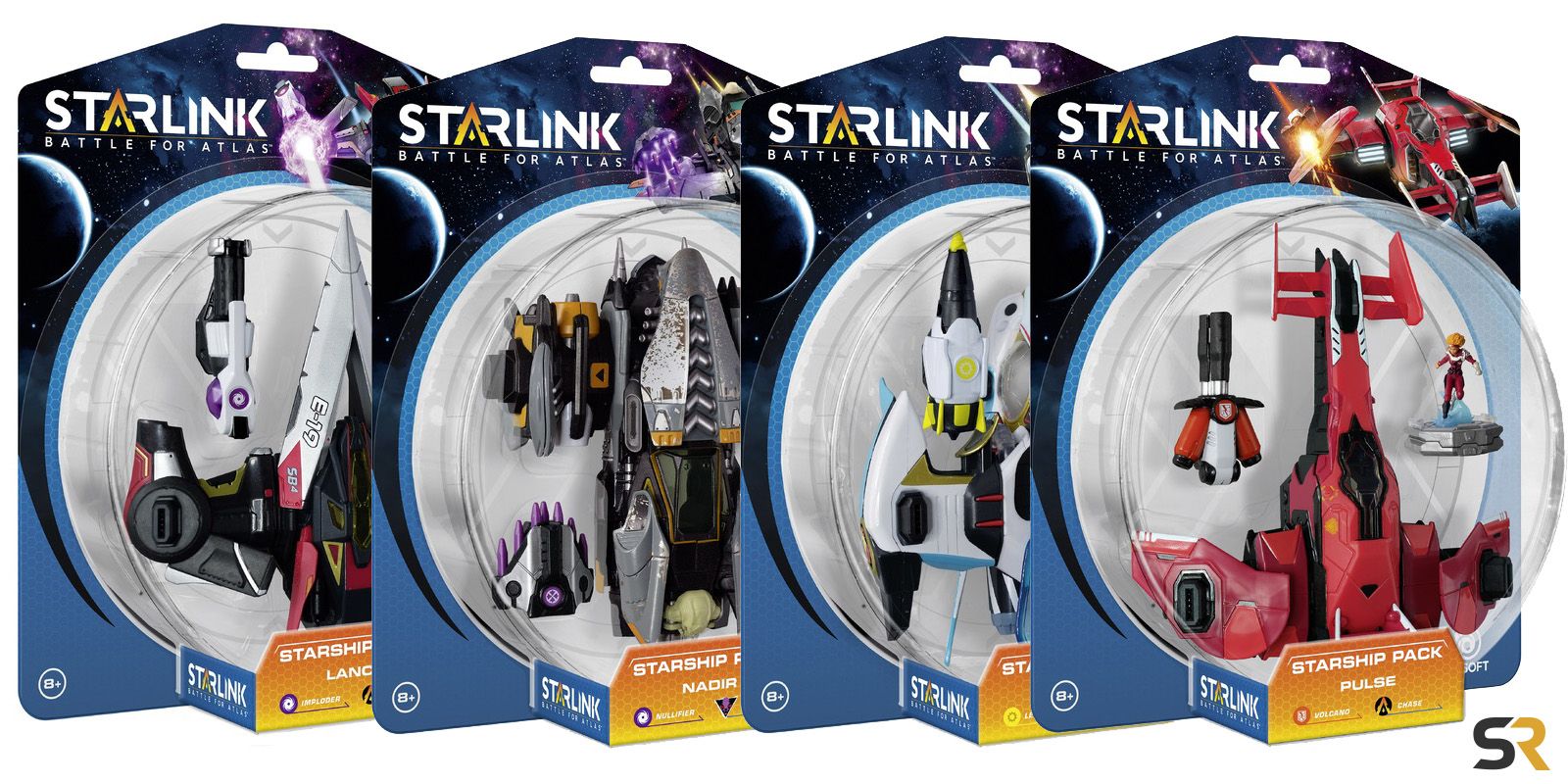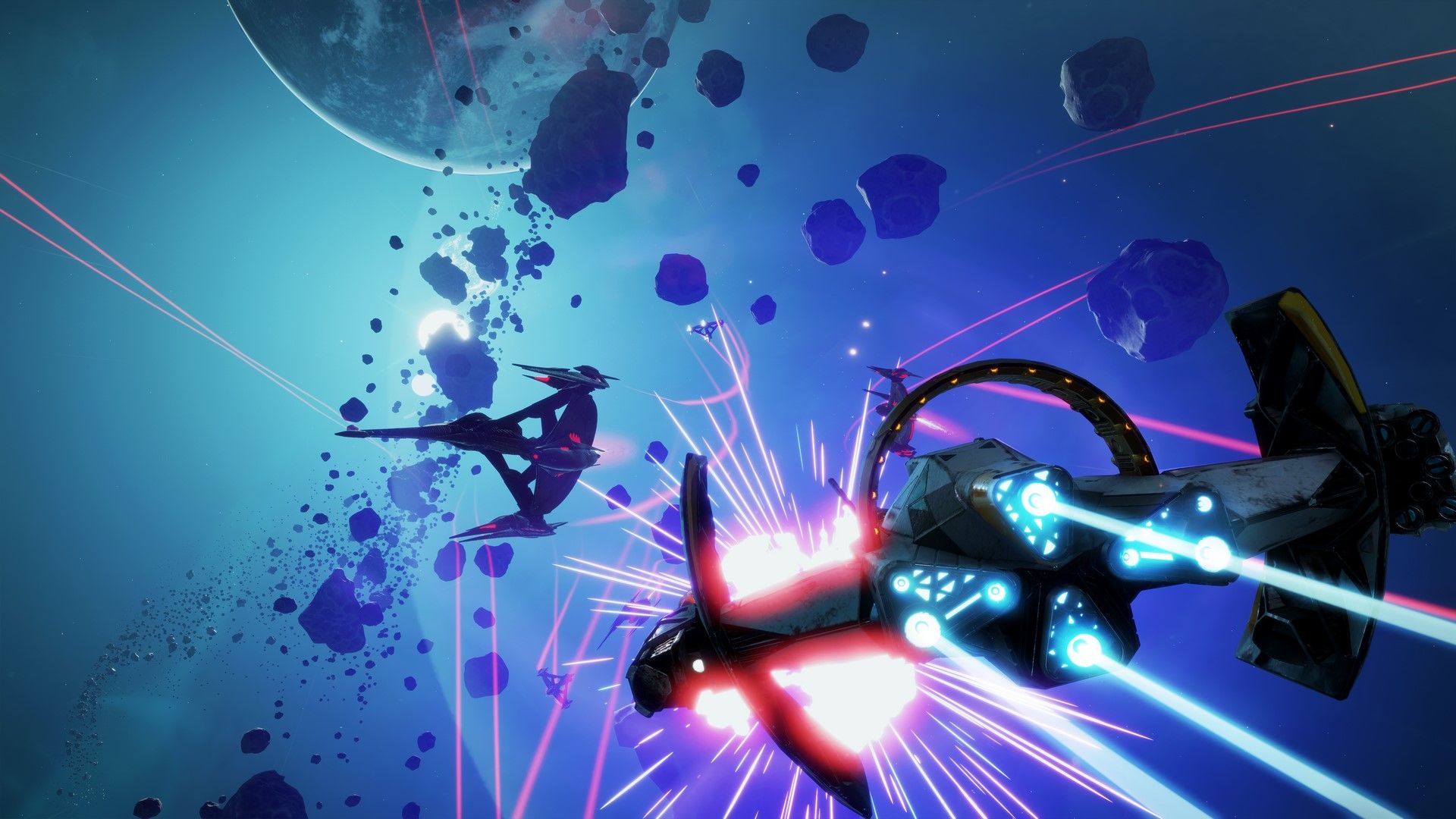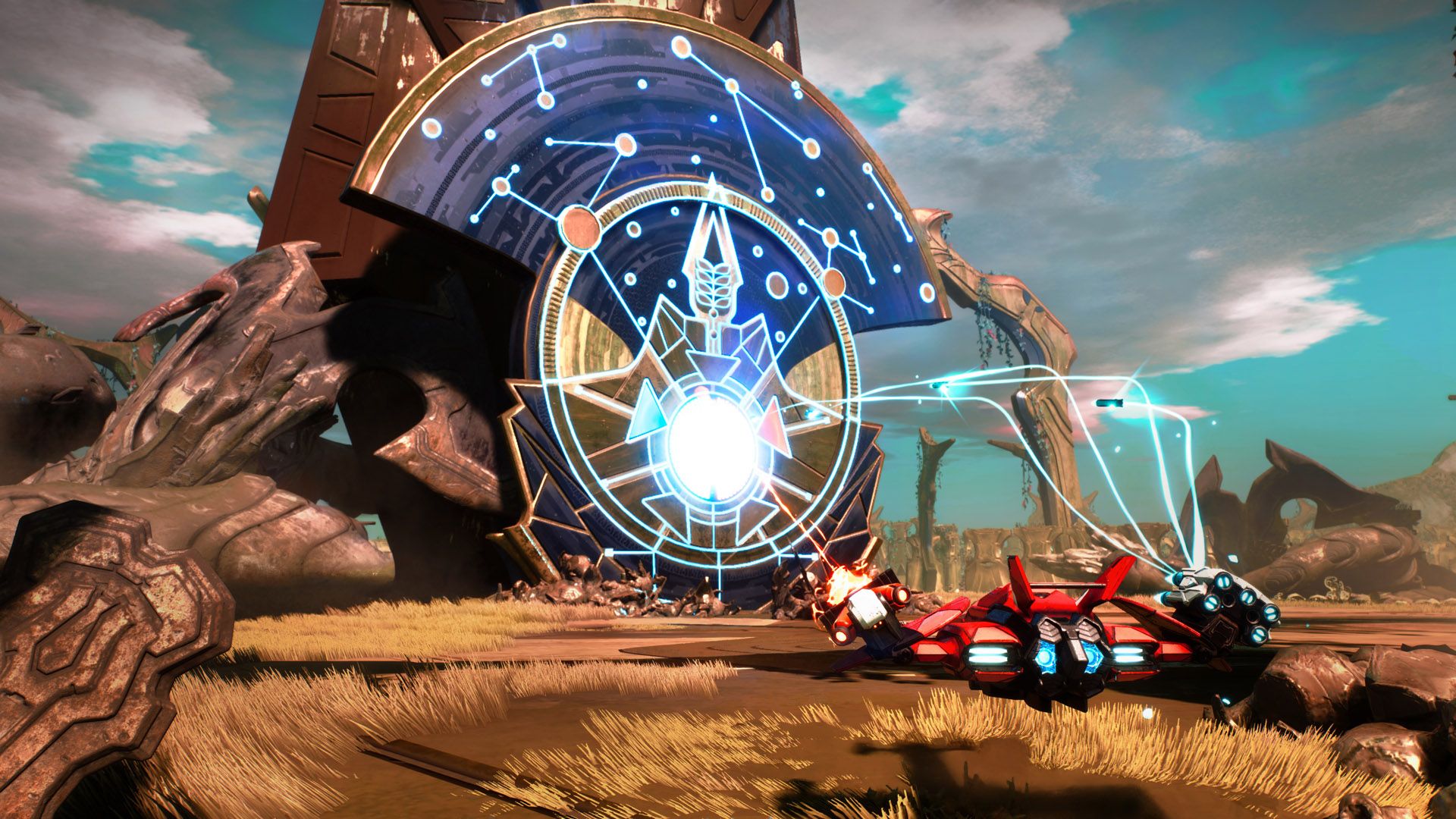It's easy to argue that not the best time for new toys-to-life video game products. Skylanders, LEGO Dimensions, and Disney Infinity have all seemingly vanished, alongside music games that use plastic instruments. For this reason alone it's strange to see Ubisoft crafting and releasing Starlink: Battle For Atlas.
From our time with Starlink so far, we're pleased Ubisoft took this risk. Starlink: Battle For Atlas is the first original game from Ubisoft Toronto, makers of Splinter Cell Blacklist, and it's awesomely fun.
Related: An interview with Starlink: Battle for Atlas's game director Richard Carrillo
The game is available on Nintendo Switch, PlayStation 4, and Xbox One and can be played with cool collectible starships that attach to a mount players place on their system's controller. Through this mechanism, players attach and swap between pilots, ships, wings, and weapons at anytime during gameplay and whatever toys are attached are instantly reflected in-game. The physical parts, sold separately outside of the starter kits, are well-made and durable. They make for awesome toys or collectible display items on their own.
This system allows players to adapt to any in-game situation, puzzle, or enemy by picking their preferred weapon types, special abilities, and ship type - each coming with different attributes. In-game, the characters, ships, and weapons can be upgraded via mods too. It has an easy to understand and rewarding progression system on this front.
The ship packs, and buying individual pilots or weapon pair packs are very expensive and Starlink: Battle For Atlas should be considered a premium experience. Players can however also purchase the deluxe version of the game and have access to all of the ships, weapons, and pilots in-game digitally. This is especially handy for Switch players who play in handheld mode on the go and after a while, we opted to play this way too on Xbox One because it's just faster and easier.
What Is Starlink: Battle For Atlas About?
The premise of Starlink: Battle For Atlas is simple. Humans found an alien visitor (Judge, who is playable has his own ship pack) and found a way to harness the power of Nova for interstellar travel. They formed a team of pilots under the Starlink Initiative to explore other star systems using to learn about Judge’s origins.
Atlas is the name of the mysterious star system the crew are exploring at the start of this game, and it's mentioned they’ve explored a few other star systems previously (the last one being Alcyone, where one of the playable characters, Shaid, is from). Starlink is the new technology developed by one of the pilots that lets them modify and swap between ships, ship parts, weapons, and pilots on the fly so the toy gimmick is worked into the game's lore in a smart way.
There’s a very Lost in Space vibe to the tone and style of the story and its ragtag group of mainly youthful characters. The cinematics are impressive and it could (should) be an animated TV series. This is all bolstered by tremendous presentation values, writing, and character voice work (only held back by canned in-game animations that don’t match the voices).
From the get-go, the game starts on a powerful moment giving motivation for what the player characters are doing, who they're up against, and why. It sets up the Starlink universe in an exciting and fascinating way. You’re stranded in a mysterious and dangerous new place, without your leader and home base. And you have an assortment of spaceships and allies to traverse the entirety of the Atlas system, in space, and on its planet surfaces.
What Is Starlink: Battle For Atlas' Gameplay Like?
Gameplay in Starlink: Battle For Atlas is entirely in third-person ship movement, completely free while in space in terms of what direction you can fly, but locked into a fast hover tank style gameplay (think open-world Star Fox) when on the surface of planets. There are dodge, boost, and shield options and each trigger controls the weapon currently attached to that side. The ships are used like characters in an adventure game. You pick up loot, and materials, even moving objects around. When in space, players manually control hyperspace travel between planets and can drop out at anytime to explore ruins.
The weapons (like all of the physical parts) can be changed on the fly at any time which becomes increasingly important to dealing with different enemy types who all have different weaknesses. Different weapons have different elements behind them and these can be combined. Stick enemies in a mini blackhole vortex, and light it on fire for bonus damage and XP. It is a bummer though when getting notified of enemy weaknesses and you not having that weapon if you're reliant on physical toys and don't have them all.
Note: You can literally put a weapon on backwards, and it'll be backwards and shoot backwards in game!
For the bulk of gameplay we played the Digital Deluxe version which includes all the pilots, ships, and weapons digitally in-game. Pressing ‘start’ and swapping between loadouts is instantaneous and there are no loading times. The deluxe version costs $80, a fraction of what it'd cost to purchase the physical versions of everything. The individual packs can be purchased digitally as DLC but the prices are insane and makes this element of the game, pay-to-win. Are you fighting an enemy weak to fire? Pay more money to take them out easily.
Ship movement, near the surface and in space, is super smooth and responsive, and the game looks gorgeous and vibrant. It runs well well too and all of the varied ships and characters fit perfectly into the style Ubisoft Toronto was aiming for. Starlink: Battle for Atlas is potentially the ultimate adventure game for sci-fans and spaceship lovers. There's loads of exploring, leveling up, and gathering resources to along with the story, and the experience can be played with a freind via drop-in, drop-out splitscreen co-op. They can use the physical toys too but you'll need another mount for the second player's controller.
There are quite a few planets to explore, each featuring missions and unique environments - reminiscent of the best parts of No Man's Sky. The question will be on how varied and fun these are and how much time players should spend slowly gathering materials or taking out the same enemies repeatedly. In our experience so far, the repetition crept up a little but and we had one quest-breaking bug that took four restarts to fix.
Come back soon as we delve deeper into the Atlas system and update this review accordingly.
More: 20 Ways Video Games Were Almost Completely Different
Starlink: Battle for Atlas releases October 16, 2018 for Nintendo Switch, PlayStation 4, and Xbox One. Screen Rant was provided the Xbox One deluxe version and select physical product for review.





